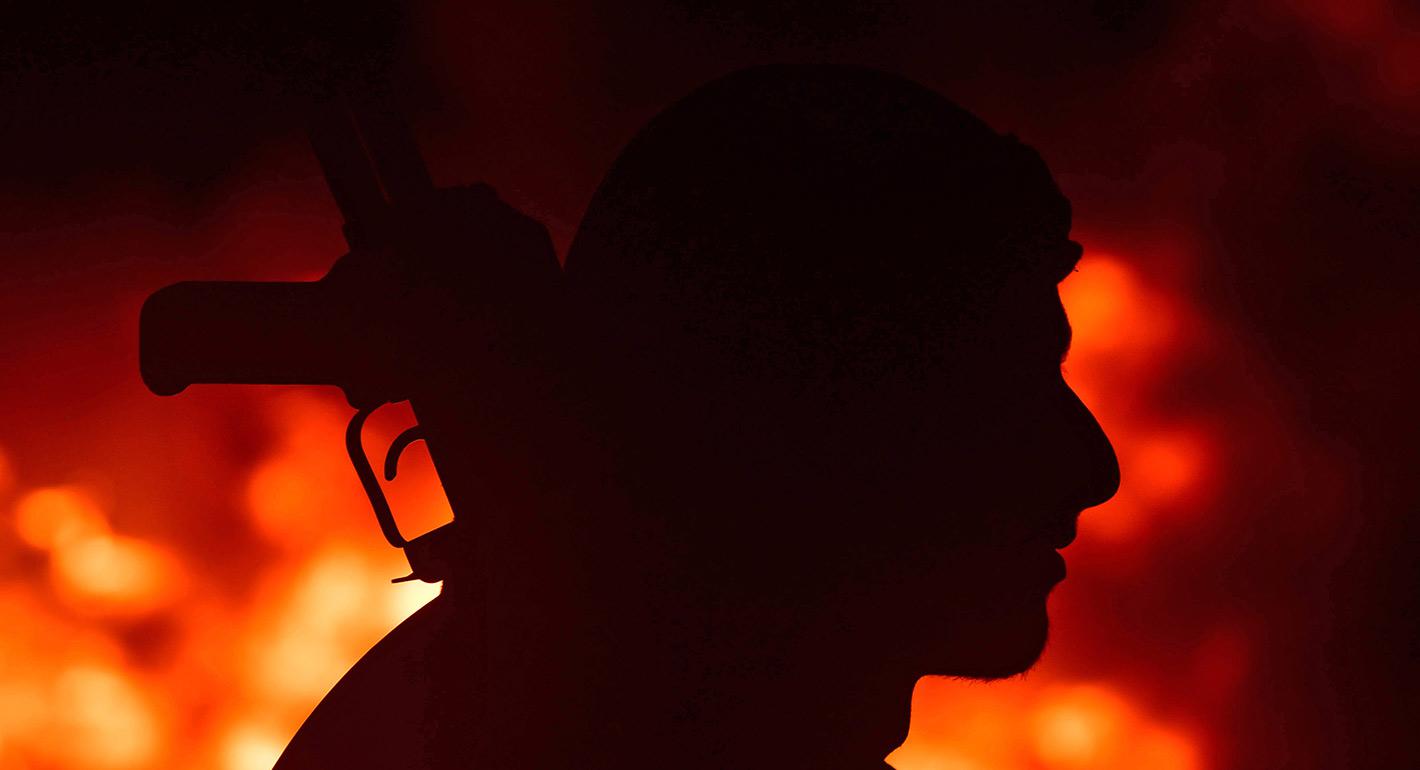On January 20, 2022, insurgents affiliated with the Islamic State (ISIS), attacked Al-Sina prison in the Ghweiran neighborhood in the city of al-Hasakah in Syria’s far northeast. The attack sent a message to many beyond the borders of the small city that the organization has significant military, financial, and media abilities. The raid, one of a long series of multi-pronged attacks in Syria and its neighboring Iraq, highlights ISIS’ resolve to model its post-caliphate strategy for insurgencies that are not necessarily contingent on territorial control.
Such a departure from the group’s basic creed was unimaginable back in 2014 when ISIS was at the height of its power under the leadership of its forefathers Abu Bakr al-Baghdadi and Abu Ibrahim al-Qurashi. A close reading of the group’s recent escalated attacks reveals that ISIS is using a pattern of tactics that are very similar to the ones they adopted prior to 2010 when they relied on traditional combat, attrition attacks, and guerrilla wars.
For example, the well-planned, wide-scale attack on the prison, used two car bombs that detonated at the main gate, allowing several of the group’s fighters to breach it and storm into the prison from several directions. In a statement on the outcome of the attack, ISIS said they were able to “free a number of detainees,” but the international coalition backed Syrian Democratic Forces (SDF) denied this and claimed they had killed 370 prisoners who attempted to escape during the weeklong clashes. SDF was able to regain full control of the prison on January 31, 2022.
Regardless, this brazen attack was a stark reminder of ISIS’ organizational strength that had been long forgotten since the fall of the border town of Baghouz in March 2019 when former American president Donald Trump announced the collapse of the group’s territorial caliphate. Since then, ISIS and its affiliate militias have decided to revert to guerrilla warfare and working under a unified leadership, which has shown exceptional malleability, especially in Syria. They have been able to efficiently restructure themselves organizationally at the military, security, administrative, and media fronts.
Non Territorial Resurgence
The group’s resurgence in Syria does not seem particularly territorial. For ISIS, rural insurgency and desert combat are no less important than urban warfare as a means to achieve its objectives and ensure its next return. The group has spared no effort in attacking the Syrian regime’s forces, its allied militias, the Russian troops, the coalition forces, the SDF forces, and, at times, the Syrian opposition forces.
ISIS realizes that territorial control gives it leverage, but given the current circumstances, it decided that becoming a covert network was the better option. Judging by the group’s behavior in Libya, Nigeria, West Africa, Tunisia, Egypt, Yemen, and Iraq, where their leadership has long been headquartered, the Islamic State is executing a low-level insurgency and keeping a low profile.
A recent report issued by the United States Pentagon indicates that ISIS has reshuffled its ranks, so that there is a reemergence of fighters in Syria, taking advantage of the U.S. withdrawal. The report also confirms that the organization has strengthened its armed capabilities in Iraq using, as it seems, a residual wealth that António Guterres, Secretary-General of the United Nations, estimated at up to $300 million.
Guterres said that the current lull in ISIS-directed attacks may only be temporary, and he expressed acute concern about a possible growth in the number of attacks. Guterres’ concerns may be well justified given the number of operations that have been executed by the group and announced through its news affiliate Amaq News Agency. According to the United Nations the estimated number of foreign fighter recruits is between 24,000 and 30,000, including 10,000 in Syria and Iraq. Analysts specialized in Jihadist groups believe that defeating the group’s Caliphate dream is not the best way to eradicate it on the ground. The fact that ISIS is turning into a non-spatial military body has enabled it to adapt to its new realities and show viability under adverse circumstances whilst also consolidating its large geographical presence.
The group’s attacks in Syria and Iraq, the two countries that witnessed the inception and the death of its Caliphate dream, demonstrate its increased powers, even if its ability to control territory has plummeted with the demise of its founding fathers.
Taim Al-Hajj is an investigative Syrian journalist. He focuses on Syrian politics and military issues. Follow him on Twitter: @taim_alhajj






